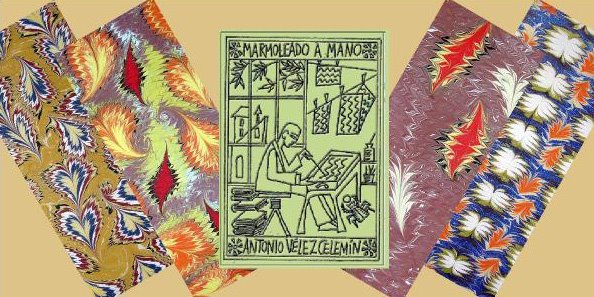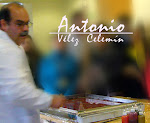**************************
"Chumichurri" does not mean anything.
It's only one affectionate word.
Here I use it to name a few nice personages
that allow me to congratulate this holidays to you,
I might have used equally the "Simpsons" or the "Flintstones".
*
This one is the most smiling, one distinguishes him perfectly,
with his good-natured smile.
Although I have added to him,
as to all the following ones,
a black point to simulate his eye
and to distinguish him very well.
He is saying...

! HAPPY HOLIDAYS¡
*
This angered him since last year,
when he did not win the lottery.
But anyway he wishes you...
! GOOD LUCK FOR THE 22ND¡
*
Fuuuu, I’m blowing, how much cold it’s there outside, says this one,
but wishing you all to spend ...
! A HAPPY CHRISTMAS NIGHT¡
*
One can already see that this one has been preparing a turkey
( a peacock if he’s a marbler)
for dinner,
it will be necessary to eat the rests of it on the following day,

! MERRY CHRISTMAS¡
*
The following one is a little worried,
He doesn’t want to be the “innocent” of the 28th,
and has taken a hat,
that makes him even more...
daring,
to remember you...
! THAT WE ARE IN THE HOLIDAYS¡
! DANCE AND ENJOY¡
*
This is the most prepared "chumichurri" for
New Year's Eve,
hidden behind his mask,
he wishes you...
! A GREAT END OF 2010 AND A BETTER ENTRY OF THE NEW YEAR 2011¡
*****
You will wonder
from where they have come out
these celebrities.
From my bath.
Most of them from this marbled paper.
And the "spirit of the New Year's Eve" from this other one.
You can play with the images,
turn them and look for the "chumichurris",
as if there were a puzzle,
a pastime.
! You will find many others¡
***
I tried to marble other papers,
more "experiments".
I very much like what I got,
but there were no “chumichurris” on it.
They only appeared when I needed an idea for my congratulation.
They are friends,
the "chumichurris" know well what friendship is,
they can smile, help, be grateful, invite, make happy,
cheer up, support, converse, accompany,
they know how to improve the life of their friends.
And they allow me to make use of this Christmas to say
all these things without seeming too vulgar.
I would like saying them every day of the year,
but I am content to say to you
that these holidays...
! take out the "chumichurri" that we all have inside¡
! HAVE VERY
HAPPY DAYS
ALL OF YOU¡























